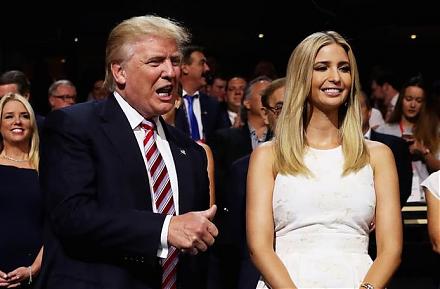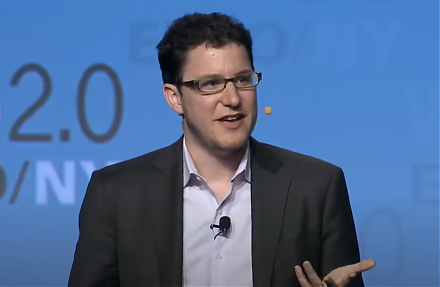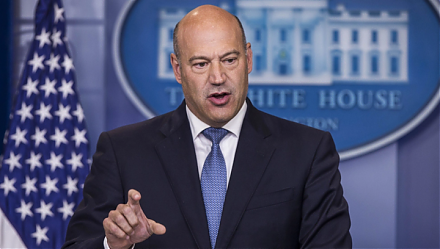

2023-10-14 10:32:00 Sat ET
stock market technology facebook covid-19 apple microsoft google amazon data platform network scale lean startup artificial intelligence antitrust alpha patent model tech titan unicorn tesla global macro outlook
Jonathan Baker (2019)
The antitrust paradigm: restoring a competitive economy
Jonathan Baker delves into the current antitrust paradigm to frame the debate over antitrust merger review and enforcement. In a fundamental view, Baker argues that product market competition seems inadequate in many U.S. markets. The antitrust regulators, the Department of Justice (DOJ) and Federal Trade Commission (FTC), should thus strengthen antitrust merger review and enforcement in order to restore competition for better consumer protection. It is imperative for America to return to much stronger antitrust enforcement (despite the Chicago antitrust deregulation by Posner (1976) and Bork (1978) in recent decades), especially because many high-tech titans are increasingly able to engage in anticompetitive practices. A plausible alternative solution is a return to greater government price and entry regulation of U.S. product market competition.
Baker represents himself as an advocate of protecting product market competition but not competitors. For this reason, Baker differs a lot from a new wave of antitrust critics (such as Khan (2017) and Philippon (2019)) who believe that U.S. antitrust merger enforcement seems to have failed to level the playing field for several high-tech oligopolists even at the expense of consumer welfare. Baker presents his new antitrust paradigm in terms of 4 fundamental issues. The 4 fundamental issues can help frame the current debate over U.S. antitrust merger review and enforcement in many high-tech markets.
Issue 1: In most U.S. markets, product market competition is inadequate, so many consumers incur large economic welfare losses and costs that free market forces cannot reduce in due course.
Issue 2: In several aspects of antitrust merger review enforcement, the status quo seems to undermine the antitrust regulators, the Department of Justice (DOJ) and Federal Trade Commission (FTC).
Issue 3: America would realize significant economic welfare gains if the DOJ and FTC managed to reform the core antitrust enforcement laws to address the lack of intense competition in light of the current prevalent dominance of high-tech titans such as Apple and Amazon etc.
Issue 4: The U.S. DOJ and FTC can help restore the antitrust enterprise to become more effective for better consumer protection.
Nobel Laureates Milton Friedman and George Stigler advance the Chicago school of economic thought for U.S. antitrust deregulation. Friedman agrees to disagree with the basic notion that the government should strictly enforce antitrust laws to promote greater competition in U.S. product markets. Also, Stigler cannot support strong enforcement of the antitrust laws specifically against big business because most traditional U.S. product markets are quite competitive. In accordance with the Chicago school of economic thought for U.S. antitrust deregulation, both Friedman and Stigler indicate that several superstar firms have used American antitrust laws for their own benefit. In this fundamental way, these superstar firms have already done drastic damage to the American business community to the detriment of U.S. consumers in mobile connectivity, software, social media, cloud service provision e-commerce, online search, and even semiconductor microchip production etc. In this negative light, Baker points out that U.S. antitrust deregulation has arisen from the free market view of the anti-government Chicago party line.
Several superstar firms tend to dominate U.S. high-tech product markets. In these high-tech product markets, superstar firms can exert market power by setting high prices above their respective marginal costs with no or little new entry. This recent rise of market power arises from lax antitrust merger review and enforcement, low deterrence of anticompetitive conduct in the form of both killer acquisitions as well as exclusive contractual terms, durable disruptive innovation in technology, higher stock ownership of rivals via institutional investors and financial institutions, fresh online platform dynamism, and oligopolistic concentration in some U.S. high-tech product markets etc. This rise of market power leads to harmful costs. These costs include wealth and income transfer from less affluent to more affluent people, slow technological progress, and rent protection by special interest groups. When push comes to shove, the law of inadvertent consequences counsels caution.
Kahle and Stulz (2017) empirically find that the number of U.S. public corporations has declined dramatically during the past 40 years (from 5,000 to about 3,500). In the same time frame, these public corporations now appear to invest substantially more in high-tech research and development. Their net profits turn out to be higher because profitability often tends to increase with firm size. Given fewer but bigger superstar firms, Kahle and Stulz (2017) find that product market concentration has increased substantially in U.S. high-tech markets during the past 20 years.
Baker argues that this sharp increase in American product market concentration is at the heart of his antitrust concerns because the trend may inadvertently empower superstar firms to charge higher price markups over the respective marginal costs. De Loecker, Eeckhout, and Unger (2020) further show that the average firm-level markup ratio has substantially risen from 1.1 in 1980 to about 1.6 in 2016. Most of the recent rise of market power seems to coincide with U.S. antitrust deregulation during the 1980s and 1990s. The recent dominance of superstar firms arises from both lax antitrust merger review, enforcement, and technological innovation.
Aggregate markups and profits have increased since the 1980s, with episodes of sharp increases during 1980-2000 and 2010-present, and an episode of no change during 2000-2010. Across the distribution of markups, there are huge increases in the top percentiles, whereas, the median remains constant over time. Hence, the recent rise of market power accords with the rise of dominance by some superstar firms at the expense of most other smaller firms. Several large firms dominate the vast majority of other firms as well as the rest of the economy. In America, 67% of the recent rise of market power arises from the reallocation of market share toward high-markup firms (and only some part is due to the increase in markups per se). Again, this evidence is consistent with the superstar firm hypothesis (Autor, Dorn, Katz, Patterson, and Van Reenen, 2020).
We can consider RAM memory microchips as an example. With the semiconductor microchips, we would find a massive decline in the price (well above the marginal cost). Due to technological progress, the number of semiconductor transistors in an integrated circuit doubles every 2 years (Moore’s law). For this reason, we can expect to see a massive decline in the unit price of high-quality memory capacity. However, the pervasive price decrease need not suggest more intense competition. There are huge differences across the semiconductor sector for the price evolution. Most high-tech products and online services have experienced a similar decline in absolute prices. In contrast, education and health care services have experienced an increase in absolute prices. To evaluate whether there is more or less intense competition, we need to evaluate the price relative to the marginal cost but not just the price level.
Autor et al (2020) find new evidence in support of the view that superstar firms are bigger because they are more productive than most other smaller firms. Can each firm raise prices and markups without attracting new entry? Can each firm maintain high prices to exclude both rivals and competitors in adjacent free markets? As an empirical matter, however, an increase in product market concentration need not result in a decrease in product market competition and consumer welfare. Efficient superstar firms can acquire less efficient firms. This free market evolution can help steer technological progress and business development in response to consumer demands, tastes, and preferences etc. In practice, most of the recent rise of market power arises from some superstar firms within the same industry in stark contrast to some dominant sectors (De Loecker, Eeckhout, and Unger, 2020). For instance, oligopolistic competition tends to prevail in the mobile software and semiconductor industries. Numerous other smaller firms face fierce competition from the dominant oligopolists.
The U.S. antitrust authorities (DOJ and FTC) have not been particularly effective at addressing anticompetitive concerns. Lax antitrust enforcement seems to have harmed consumer welfare. Since dominant online platforms integrate into adjacent business lines with iterative continuous improvements, tech titans operate both as key intermediaries for third-party firms as well as direct competitors to these third-party service providers. These online platforms leverage this dual transformation through user data exploitation, self-preference, core tech appropriation, and abrupt changes to terms of online platform usage. For instance, Amazon now faces both U.S. and E.U. antitrust scrutiny over the current e-commerce use of merchant data. Under the European General Data Protection Regulation (GDPR), the European Commission specifically probes into whether Amazon uses and collects third-party seller data to promote its products to the detriment of other retailers. This antitrust investigation serves as a core structural step toward better characterizing Amazon cross-border e-commerce business practices. The current inquiry can help reveal how tech titans such as Amazon and Apple may inadvertently use customer data to reinforce their market power and dominance.
This concern reflects negative feedback from both U.S. and E.U. third-party sellers, retailers, and manufacturers that Amazon has been trying to abuse its dual role as a direct e-commerce competitor and also as an online marketplace for merchants. Under the current Amazon terms of use for America and Europe, most third-party sellers and most other merchants grant Amazon royalty-free rights to use their own product information, content, technology, and even trademark logo design. Global e-commerce platforms should not eliminate retail consumer benefits such as better product prices and wider options through anti-competitive business practices. Both American and European regulators can impose fines and penalties of 10% to 15% of worldwide sales. However, antitrust experts indicate the essential need for both U.S. and E.U. regulators to design some new precedent of both industry standards and business practices for online platforms such as Amazon and Apple.
In the longer run, free market forces can help address potentially anticompetitive situations by reducing new entry barriers. The antitrust regulators can encourage international trade and foreign competition. Also, the U.S. DOJ and FTC can help consumers gain competitive advantages in specific sectors by challenging industry leaders, national champions, high-tech bellwethers, and disruptive innovators etc (Christensen, 1997; Christensen and Raynor, 2003; Dyer, 2011; Christensen et al, 2016). Unfortunately, many U.S. policy-makers have often offset these sources of competition by attracting anticompetitive practices such as occupational license accreditation, trade protection, and patent legislation.
Baker argues that the political economy considerations may help explain the failure of antitrust to play a significant role in increasing free market competition. Baker first points to the lack of political support for greater antitrust enforcement, and then he traces the history of antitrust enforcement in line with political trends over time. Through this history of antitrust merger review enforcement, deregulation tends to accelerate as the Chicago school of economic thought emphasizes market forces in support of less government intervention. Baker further discusses the important issue of political use of antitrust enforcement to draw a distinction between special interests and ideologues. Both can contribute to ineffective or even socially harmful antitrust enforcement.
In recent times, the DOJ opens an antitrust inquiry into whether the top automakers comply with environmental rules previously set by the Obama administration. BMW, Ford, Honda, and Volkswagen have announced their agreement with California on carbon emissions standards that would be substantially stricter than the national standards under the Trump administration. This DOJ antitrust inquiry continues to the current Biden administration. The DOJ investigates whether the 4 automakers are guilty of tacit collusion. This tacit collusion helps reduce car choices with higher prices well above the respective marginal costs.
The Supreme Court often rules on antitrust and other business matters. Supreme Court judges tend to polarize along ideological lines. Epstein, Landes, and Posner (2013) perform their statistical analysis of business cases. As this analysis shows, conservative Supreme Court judges are extremely pro-business, whereas, liberal Supreme Court judges are only moderately liberal. Instead of basic facts, ideology continues to increasingly influence antitrust policy outcomes.
The most important constraint on the efficacy of antitrust is the inability of the DOJ and FTC to predict free market outcomes in merger cases under Section 7 of the Clayton Antitrust Act, and monopolization cases under Section 2 of the Sherman Antitrust Act. In the former, the DOJ and FTC must determine if each merger may substantially reduce market competition with some form of monopoly. In the latter, even though there would be some evidence of monopolization, there is no or little historical evidence for the DOJ and FTC to posit that the government can prescribe some remedy in support of better consumer welfare. In this light, Baker argues for strengthening antitrust enforcement.
Baker defends antitrust institutions. His central thesis is that the Chicago school of economic thought has influenced the DOJ and FTC to adopt a restrictive approach to antitrust intervention and enforcement for decades at considerable cost to social welfare. In fact, Baker points out that the DOJ and FTC have done little to improve consumer welfare because these antitrust regulators have not shown visible signs of significantly exorcising their Chicago demons to adopt antitrust policy reforms.
Baker argues that the essential force for antitrust policy reforms would be populist pressures for the DOJ and FTC to protect the political bargain. The political bargain helps empower all 3 branches of the federal government to play a constructive role in restoring a competitive economy through more effective antitrust enforcement. The public should be more aware of market power and its serious repercussions. Presidential candidates who run for office on progressive economic reforms should nurture political mobilization against the exercise of market power. The DOJ and FTC should take the lead in in pushing the courts to strengthen antitrust protection. Plaintiffs and the courts should challenge the Chicago school of economic thought. Before the Supreme Court, plaintiffs must rely on persuasive economic arguments that are at variance with Chicago doctrines.
Baker strengthens his antitrust case by looking to the growing dominance of tech titans such as Apple and Amazon. It is important for the antitrust regulators (DOJ and FTC) to safeguard against disruptive innovators who work at tech titans. These tech titans may inadvertently inflict significant harm on consumers by breaking the U.S. antitrust laws to set prices well above the respective near-zero marginal costs. It is difficult for the DOJ and FTC to envision how the future disruptive innovations may help violate the relevant antitrust laws.
Baker argues that antitrust enforcement should be much more active. He interprets the relevant empirical evidence on the recent rise of market power (and the decline in market competition) in support of his antitrust case. Antitrust enforcement should guard against tacit horizontal price markups within adjacent markets, monopolistic mergers, and exclusionary behaviors by tech titans. These usual anti-competitive practices can often be harmful to consumer welfare due to higher prices and fewer choices of alternative products and services.
Jonathan Baker delves into the current antitrust paradigm to frame the debate over antitrust merger review and enforcement. In a fundamental view, Baker argues that product market competition seems inadequate in many U.S. markets. The antitrust regulators, the Department of Justice (DOJ) and Federal Trade Commission (FTC), should thus strengthen antitrust merger review and enforcement in order to restore competition for better consumer protection. It is imperative for America to return to much stronger antitrust enforcement (despite the Chicago antitrust deregulation by Posner (1976) and Bork (1978) in recent decades), especially because many high-tech titans are increasingly able to engage in anticompetitive practices. A plausible alternative solution is a return to greater government price and entry regulation of U.S. product market competition.
Baker represents himself as an advocate of protecting product market competition but not competitors. For this reason, Baker differs a lot from a new wave of antitrust critics (such as Khan (2017) and Philippon (2019)) who believe that U.S. antitrust merger enforcement seems to have failed to level the playing field for several high-tech oligopolists even at the expense of consumer welfare. Baker presents his new antitrust paradigm in terms of 4 fundamental issues. The 4 fundamental issues can help frame the current debate over U.S. antitrust merger review and enforcement in many high-tech markets.
In most U.S. markets, product market competition is inadequate. Many consumers incur large economic welfare losses that free market forces cannot reduce in due course. In several aspects of antitrust merger review enforcement, the status quo seems to undermine the antitrust regulators, the Department of Justice (DOJ) and Federal Trade Commission (FTC). America would realize significant welfare gains if the DOJ and FTC managed to reform the antitrust enforcement laws to address the lack of intense competition in light of the current prevalent dominance of high-tech titans such as Apple and Amazon etc. The U.S. DOJ and FTC can help restore the antitrust enterprise to become more effective for better consumer protection.
Several superstar firms tend to dominate U.S. high-tech product markets. In these high-tech product markets, superstar firms can exert market power by setting high prices above their respective marginal costs with no or little new entry. This recent rise of market power arises from lax antitrust merger review and enforcement, low deterrence of anticompetitive conduct in the form of both killer acquisitions as well as exclusive contractual terms, durable disruptive innovation in technology, higher stock ownership of rivals via institutional investors and financial institutions, fresh online platform dynamism, and oligopolistic concentration in some U.S. high-tech product markets etc. This rise of market power leads to harmful costs. These costs include wealth and income transfer from less affluent to more affluent people, slow technological progress, and rent protection by special interest groups. When push comes to shove, the law of inadvertent consequences counsels caution. From time to time, there are many different ways for economists to skin the cat, and all roads eventually lead to Rome. Yet, no one can build Rome in one day.
This analytic essay cannot constitute any form of financial advice, analyst opinion, recommendation, or endorsement. We refrain from engaging in financial advisory services, and we seek to offer our analytic insights into the latest economic trends, stock market topics, investment memes, personal finance tools, and other self-help inspirations. Our proprietary alpha investment algorithmic system helps enrich our AYA fintech network platform as a new social community for stock market investors: https://ayafintech.network.
We share and circulate these informative posts and essays with hyperlinks through our blogs, podcasts, emails, social media channels, and patent specifications. Our goal is to help promote better financial literacy, inclusion, and freedom of the global general public. While we make a conscious effort to optimize our global reach, this optimization retains our current focus on the American stock market.
This free ebook, AYA Analytica, shares new economic insights, investment memes, and stock portfolio strategies through both blog posts and patent specifications on our AYA fintech network platform. AYA fintech network platform is every investor's social toolkit for profitable investment management. We can help empower stock market investors through technology, education, and social integration.
We hope you enjoy the substantive content of this essay! AYA!
Andy Yeh
Chief Financial Architect (CFA) and Financial Risk Manager (FRM)
Brass Ring International Density Enterprise (BRIDE) ©
Do you find it difficult to beat the long-term average 11% stock market return?
It took us 20+ years to design a new profitable algorithmic asset investment model and its attendant proprietary software technology with fintech patent protection in 2+ years. AYA fintech network platform serves as everyone's first aid for his or her personal stock investment portfolio. Our proprietary software technology allows each investor to leverage fintech intelligence and information without exorbitant time commitment. Our dynamic conditional alpha analysis boosts the typical win rate from 70% to 90%+.
Our new alpha model empowers members to be a wiser stock market investor with profitable alpha signals! The proprietary quantitative analysis applies the collective wisdom of Warren Buffett, George Soros, Carl Icahn, Mark Cuban, Tony Robbins, and Nobel Laureates in finance such as Robert Engle, Eugene Fama, Lars Hansen, Robert Lucas, Robert Merton, Edward Prescott, Thomas Sargent, William Sharpe, Robert Shiller, and Christopher Sims.
Follow our Brass Ring Facebook to learn more about the latest financial news and fantastic stock investment ideas: http://www.facebook.com/brassring2013.
Follow AYA Analytica financial health memo (FHM) podcast channel on YouTube: https://www.youtube.com/channel/UCvntmnacYyCmVyQ-c_qjyyQ
Free signup for stock signals: https://ayafintech.network
Mission on profitable signals: https://ayafintech.network/mission.php
Model technical descriptions: https://ayafintech.network/model.php
Blog on stock alpha signals: https://ayafintech.network/blog.php
Freemium base pricing plans: https://ayafintech.network/freemium.php
Signup for periodic updates: https://ayafintech.network/signup.php
Login for freemium benefits: https://ayafintech.network/login.php
If any of our AYA Analytica financial health memos (FHM), blog posts, ebooks, newsletters, and notifications etc, or any other form of online content curation, involves potential copyright concerns, please feel free to contact us at service@ayafintech.network so that we can remove relevant content in response to any such request within a reasonable time frame.
2019-05-19 19:31:00 Sunday ET

MIT professor and co-author Daron Acemoglu suggests that economic prosperity comes from high-wage job creation. Progressive tax redistribution cannot achiev
2017-04-13 10:42:00 Thursday ET

President Donald Trump unveils the dramatic *tax overhaul proposal*. Through this tax plan, Trump replaces the current 7 income tax brackets with 3 leane
2020-06-03 09:31:00 Wednesday ET

Lean enterprises often try to incubate disruptive innovations with iterative continuous improvements and inventions over time. Trevor Owens and Obie Fern
2018-08-11 14:35:00 Saturday ET

The Trump administration imposes 20%-50% tariffs on Turkish imports due to a recent spat over the detention of an American pastor, Andrew Brunson, in Turkey
2018-03-02 12:34:00 Friday ET

White House top economic advisor Gary Cohn resigns due to his opposition to President Trump's recent protectionist decision on steel and aluminum tariff
2025-02-28 11:31:00 Friday ET

AYA fintech network platform provides proprietary alpha stock signals and personal finance tools for stock market investors. As of March 2025, we have up